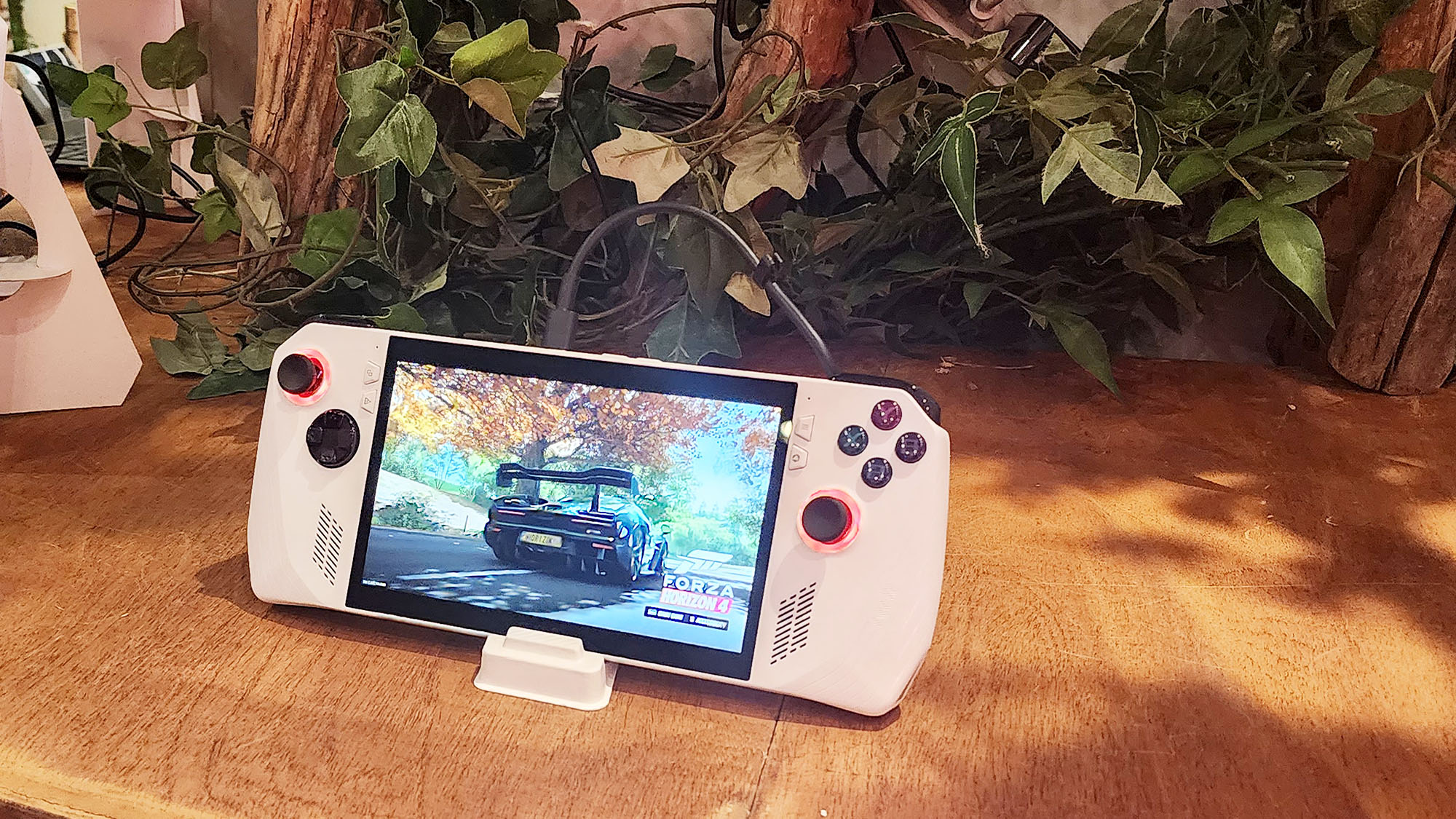
I’m back in the office on a hybrid work schedule, which means that I once again have to brave the daily commute on the subway three days a week. That means I’ll need something to block out the street performers, loud talkers and potential fights on the A or C. I hope that in addition to my smartphone and headphones, the Asus ROG Ally will be my newest distraction.
Lighter than the Steam Deck and potentially more powerful, the ROG Ally comes out the box with one of the best displays I’ve seen on a modern handheld. Plus, it supports a plethora of games. But what’s going to make or break this new system is price, which to date remains unknown.
I had an opportunity to go hands on with the Asus ROG Ally and let’s just say Valve might want to start clutching its pearls. Read on to learn why.
Asus ROG Ally Pricing and Configurations
But how much is it? Unfortunately, Asus is keeping quiet on the subject until at least May 11, the Ally’s global launch, which means we have to speculate for now. Ideally, Asus will either match or beat the Steam Deck’s pricing which starts at the $499 64GB eMMC storage base model with 16GB of RAM while the top-tier configuration costs $649 and brings a 512GB NVMe storage to the equation. The Switch OLED is the cheapest option on the market at $349.
As far as specs, we know that the Ally will feature an AMD Ryzen Z1 processor with up to 16GB of LPDDR5 RAM and a maximum storage of a 512GB NVMe Gen 4 SSD. I’m hoping Asus can keep it under $700, but depending on how well it performs in power, endurance and cooling they could possibly get away with charging $800. I can’t see consumers willing to pay much more, but I’ve been proven wrong plenty of times before.
Whatever the pricing, the Ally will also ship with three free months of Xbox Game Pass Ultimate.
Asus ROG Ally Design
The ROG Ally’s frame is made from pristine matte white plastic with glossy black accents across the buttons, bumpers and triggers. A spacious display occupies most of the Ally’s front with a pair of white buttons flanking both sides. To the right, you have the X,Y, A and B buttons along with a LED backlit analog stick. The D-Pad sits on the left alongside the other analog stick. A couple of intake vents sit towards the bottom, leaving just enough room for a comfortable grip.
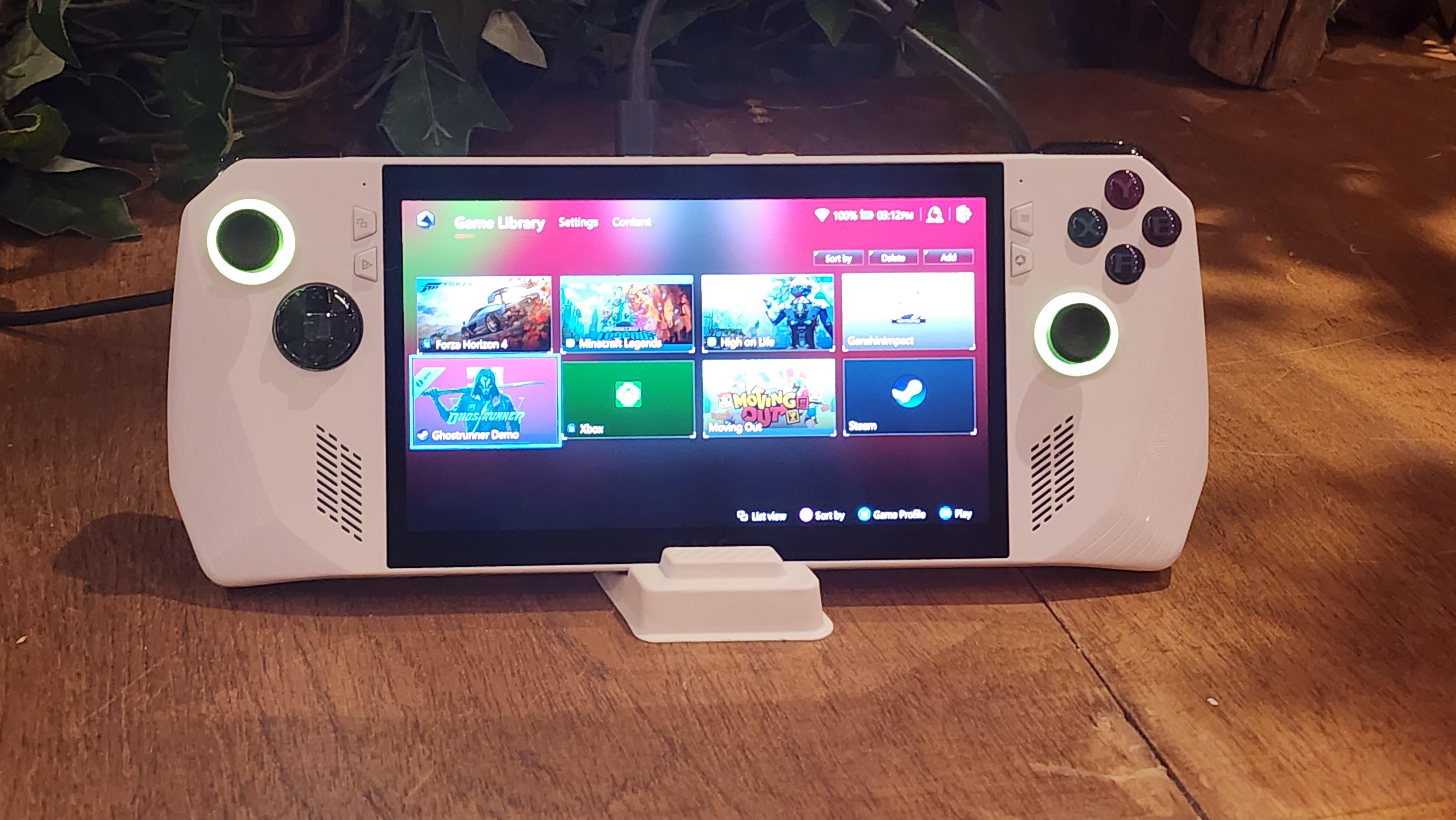
The Ally’s rear panel is also made of white plastic and is bisected by a shiny holographic strip. You’ll find some rear vents, one in the shape of Asus’ ROG emblem as well as a pair of black matte back paddles. It should be noted that those rear vents can blow hot as pointed out by Kimberly Gedeon, one of my intrepid Laptop Mag editors. Along the top of the device sit the left and right bumpers and triggers along with a few buttons and slots.
As handsome as the Ally is in white with glittering RGB backlighting, I’m hoping that Asus found a way to treat the plastic so it doesn’t fade or stain. White tends to yellow over time and while that’s cool for book pages, you don’t want it happening to your gaming devices.
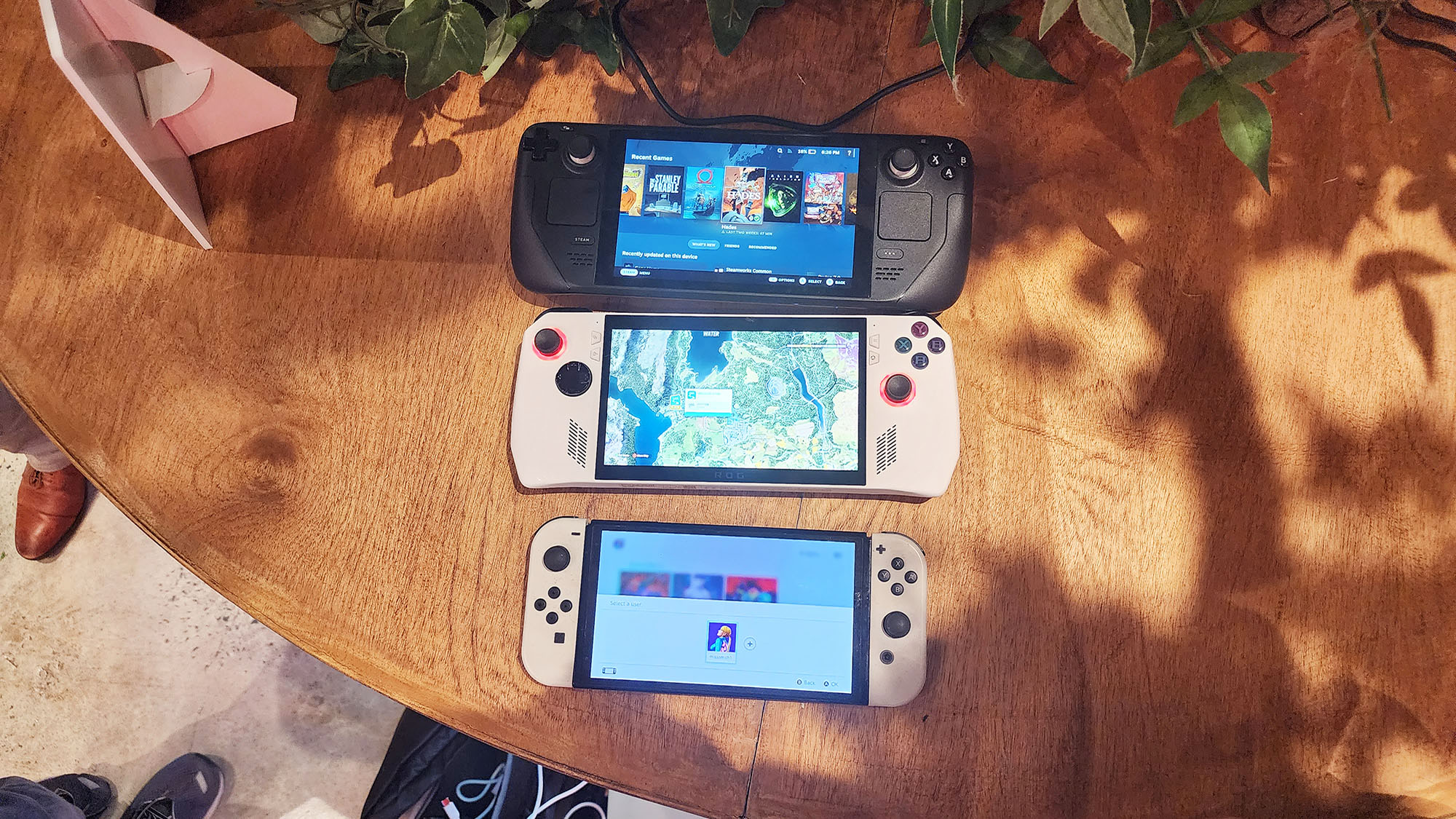
We don’t have exact dimensions just yet, except the 21.4-ounce weight, but just looking at the ROG Ally, it’s clear that it sits directly between the Steam Deck (23.5 ounces 11.7 x 4.6 x 1.9 inches) and the Nintendo Switch OLED (14.9 ounces, 9.5 x 4 x 0.6 inches) Valve’s handheld is the biggest of the three, followed by the Ally with the Switch OLED being the smallest.
Asus ROG Ally Buttons and Ports
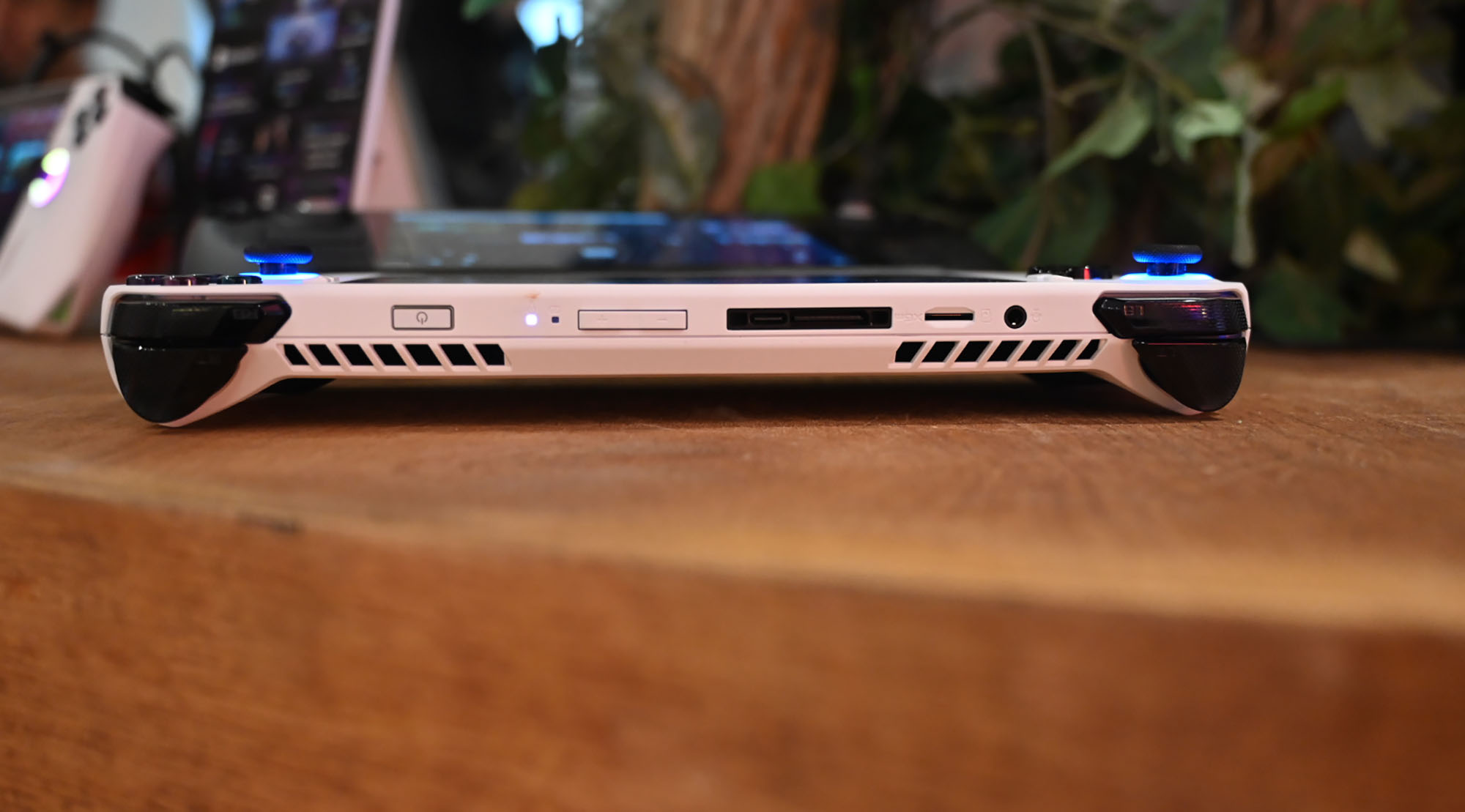
The ROG Ally has several buttons and slots adorning the top of the device. You have the power and volume buttons alongside a UHS II microSD slot to expand the handheld’s storage capacity and an audio jack. You also have a proprietary slot that allows you to connect the Ally to the ROG XG Mobile, the company’s external GPU, in case you want to give the handheld a serious power boost. You can also stick a USB-C cord in there,to power the device.
Asus ROG Ally Display
Without a doubt, of today’s handhelds, the ROG Ally has the best display in terms of resolution, refresh rate and brightness. The 7-inch, 1920 x 1080p panel sports a 7-millisecond response rate with a 120Hz refresh rate. It outclasses both the Steam Deck (7 inches, 1280 x 800, 60Hz) and Switch OLED (7 inches, 1280 x 720). For brightness, Asus estimates the Ally will average 500 nits which is brighter than the Steam Deck’s 400 nits.

Although I don’t have exact brightness measurements for the Ally, I can tell you that the AMD FreeSync display is absolutely stunning. I drove around in Forza Horizon 5 and I was immediately drawn in by the rich colors of the surrounding countryside as I made my way around a sharp turn. I was so caught up in the scenery, I hit the curve too hard forcing me into a nearby stream which sent beads of water into my line of sight that gently rolled off as I accelerated out of my soggy locale.
I’m excited to see how the display does with horror games and they’re typically darkened environments. But so far, I’m cautiously optimistic.
Asus ROG Ally Performance
As I stated earlier, I spent some time running through Forza Horizons 5. It’s a taxing title on PC, as well as the Xbox Series X and S, so I was surprised to see it running so smoothly on a handheld. It’s a testament to the AMD Ryzen Z1 processor running the system — built on a Zen 4 architecture with RDNA 3 graphics. It’s a definite step up from the Steam Deck’s RDNA 2 graphics with AMD claiming a 50% performance-per-watt increase.
Whether I was tearing down the road by myself trying to catch up to the lead car or trying to box out an opponent, I never witnessed any slowdown or clipping. I’m eager to see how the system holds up in a fighting game or FPS.
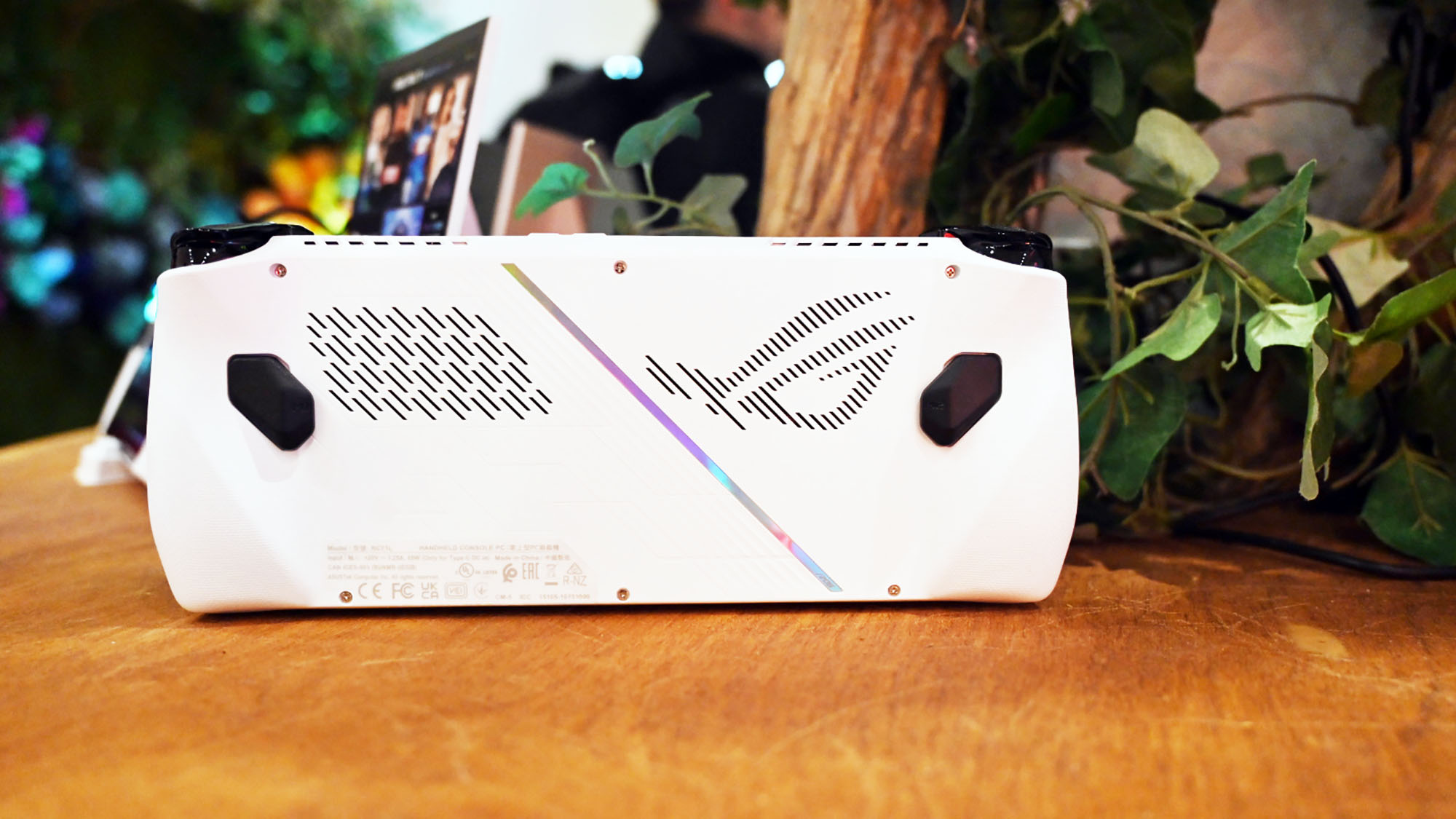
Aside from the near photorealistic graphics of Horizon 5, I really took notice of the analog sticks, bumpers and haptics. One of the marks of a great driving or racing game is that each car feels different –– from the way they accelerate, take a turn, brake or drift, it’s like the car’s specific signature. Even though I was only driving a Smart car, I felt all those things as I raced through the level. I wish there were more cars unlocked so I could really put it to the test, but I’ll have to wait until I get the Ally in for testing.

As far as the buttons and triggers, everything was springy with strong feedback. The analog sticks are nicely spaced with agile response. The analog sticks with their concave tops and textured size provided a gentle grip for my thumbs that’s reminiscent of an Xbox controller.
Speaking of controllers, a wish I have for all handhelds going forward, especially if I’m paying over $500, is the ability to tweak or swap out parts similar to an Xbox Elite or Scuf controller. It’d be nice to swap out the analog sticks for longer or shorter ones on the fly or adjust the trigger and bumpers’ sensitivity. Just a thought.
Asus ROG Ally Software
The ROG Ally runs on Windows 11, which I was suddenly reminded of as the Start Menu and taskbar suddenly appeared during my Horizon 5 drive through. My demo didn’t really get time to dig into the backend of the Ally during my hands-on, but I wouldn’t be surprised if you can turn the Ally into a workable PC in a pinch –– just add a wireless mouse and keyboard and voila! It’s definitely something I plan to explore in the near future.
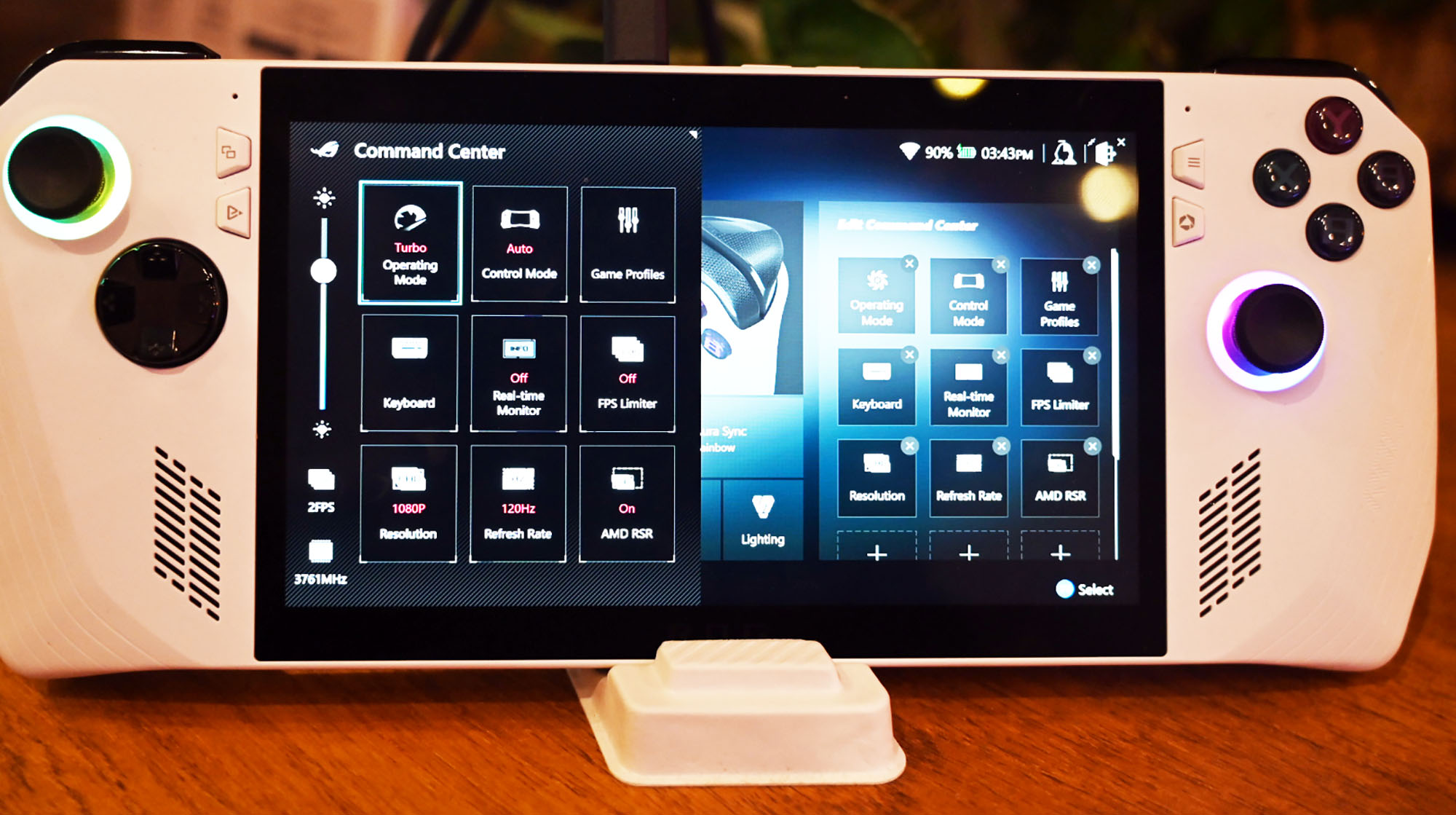
Aside from Windows 11, one of the main apps you’ll use is Asus Armoury Crate SE. If you’ve used an Asus gaming laptop before, you’ll recognize this software as the place you can set performance and battery modes as well as the RGB lighting. It’ll serve many of the same functions on the Ally, except that you’ll have access to key mapping software so you can create custom inputs for every game.
From what I saw during my demo, the software is fairly straightforward and intuitive, but I’ll have to wait until it’s in for review to know for certain.
Asus ROG Ally Games
I’ve said it once, I’ll say it a thousand times, hardware is only as good as its software. Otherwise, it’s just a pricy paperweight. To prevent paperweight status, the ROG Ally will play nice with most game launchers and services including Xbox Game Pass, EA Pass, Epic Games and of course Steam. No word if GOG Galaxy, Ubisoft Connect or other popular game launcher will be compatible, but being that this is a Windows system, it’s not a foregone conclusion.
Asus ROG Ally Battery Life
This one’s still up in the air. The rumors have the ROG Ally’s battery life between 2-7 hours depending on the type of game which is on a par with the Steam Deck. Meanwhile, the Switch OLED is rated for between 4 and 9 hours. Other factors about the Ally’s battery life to consider are the refresh rate, screen brightness and resolution. While it would pain me to have to turn down any setting, it’s most likely going to have to happen in favor of longer game time.

Although my work commute is at most 40 minutes, I’d like a system like this to at least last four hours on a charge. But I’m definitely going to have a powerful portable charger on me just in case. And here’s hoping for a short charge time. The Switch OLED is listed as taking three hours while in sleep mode to get to a full charge. That’s too long in my opinion.
Bottom Line
I’m not going to lie, I’m excited about the ROG Ally. It’s lighter than the Steam Deck and more powerful than the Nintendo Switch OLED. And it’s got a better display than both its competitors.
But a lot of unknowns remains, the most important of which is pricing. Depending on the specs and performance, Asus might skate being a little more expensive than the Steam Deck, but not by much. Make the Ally too expensive and you could kill its momentum out the gate.
If Asus can present a product that’s more powerful than the Steam Deck with longer or comparable battery life, it could take the mobile PC gaming market by storm. It’s Asus’ game to lose and I’m eager to see how it all plays out in our labs and my hands.







